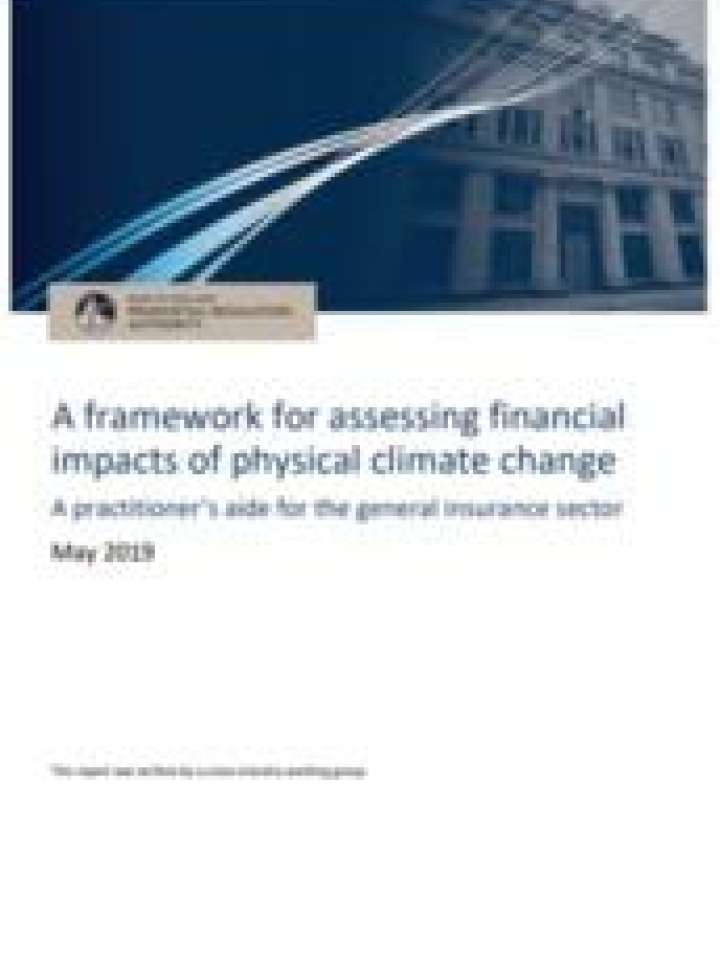A framework for assessing financial impacts of physical climate change: A practitioner’s aide for the general insurance sector
Changes to the global climate will pose an increasing risk to the general insurance industry over the coming decades. A cross-industry specialist working group wrote this report to address an element of physical risk to insurance liabilities from climate change risk: weather-related events changing in response to different future climate conditions. The report is aimed at practitioners working with or at general insurance firms who are looking to assess the financial impacts to the liability side of the firm’s balance sheet caused by future climate change.
The paper outlines a framework for practitioners to use to assess this risk, using tools that are already available within the general insurance sector. The framework is intended as a possible starting point for firms to assess the impacts in the context of their business decisions and disclosure requirements. Although the results from such an analysis will have inherent uncertainty, the insurance industry is uniquely placed to manage this due to its existing expertise in dealing with uncertainty when assessing climatic extremes. Several case studies are also provided which illustrate how different stages of the framework could be used.
The framework has six stages:
- Identify business decision(s)
- Define materiality
- Conduct background research
- Assess available tools
- Calculate impact
- Reporting and action
While this report acknowledges that tools assessing physical climate change risk are evolving rapidly, it puts emphasis on outlining the tools and methodologies that are currently available to the general insurance sector to assess the potential impact of climate change on their insurance liabilities. The advantages and disadvantages of each of the tools are discussed.
This report also sets out recommendations for how the catastrophe analytics industry can contribute further, suggesting that it can play an important role in interpreting existing scientific studies and, combined with existing tools, assess the financial impacts from physical climate change while making recommendations for improving both future research and catastrophe tools development.
Explore further
